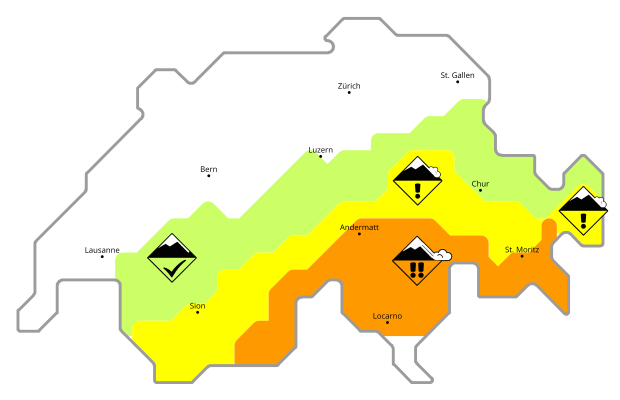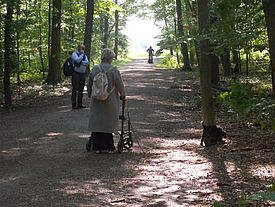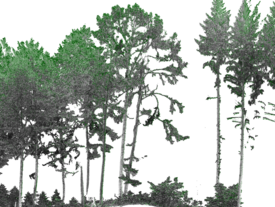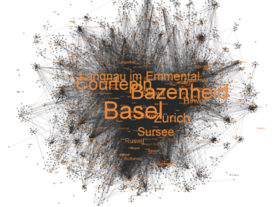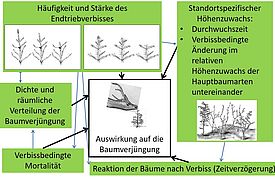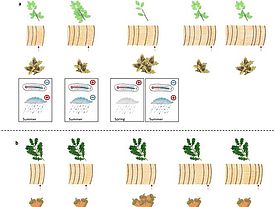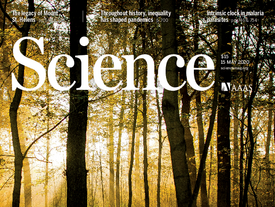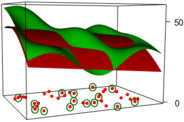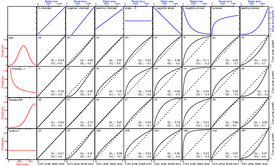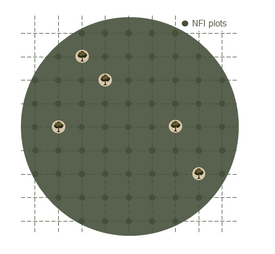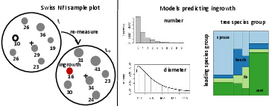Tessa Hegetschweiler - WML – WaMos meets LFI
Since 2014 we have been developing and testing various approaches to link the Swiss socio-cultural forest monitoring WaMos with the National Forest Inventory LFI. LFI assesses the forest from the perspective of forest management and natural science but does not include forest visitors’ recreation attitudes and behaviour, whereas WaMos investigates the social dimension such as forest recreation attitudes and forest-recreation behaviour but does not include physical data about the forest. However, especially regarding forest recreation, both the physical characteristics of the forest in which recreation takes place as well as the social aspects such as visitor preferences and behaviour play an important role. The question arises whether methods and data from LFI and WaMos could be combined to explain and possibly even predict forest recreation patterns from forest-related and visitor-related data. In this talk I will illustrate our research on this topic over the last six years, focusing on perceived visual attractiveness of forests as an indicator for the recreational value of the forest. I will explain our different approaches, show some main results and give a short outlook on future developments.
Christian Rosset - TBk: a computer tool for producing stand maps for practical uses based on remote sensing data
TBk is a computer tool with which a stand map can be generated based on generally accessible remote sensing data. Stand delimitation is based on the spatial distribution of dominant trees, i.e. the maximum height per unit area (e.g. are) of a vegetation height model (VHM input grid). The dominant height (hdom), the maximum height (hmax) and the degree of cover (DG) are determined for each stand. The delimitation process is based on a set of rules that also apply when delimiting stands manually in the forest, making the results useful for practical uses like silviculture and forest planning. The coarseness of the resulting stand mosaic can be adjusted by the user with different parameters, especially the tolerance range and the pixel size of the input grid used. TBk has been developed at BFH-HAFL and is in use in several Cantons.
Daniel Kükenbrink - 3D Forest Structure Assessment using Laser Scanning and Photogrammetry - Possibilities and Limitations
Forest structure is an important parameter for the assessment of forest functioning and productivity as well as light availability within the forest canopy. It gives us a lot of information about how the forest developed over time and how it will develop in the future. However, three-dimensional forest structure assessment is a non-trivial task. Recent advances in the field of laser scanning and photogrammetry allows us to acquire three-dimensional information on the forest structure at ever increasing levels of detail. In this presentation I will talk about recent experiences we made when testing new instruments and methodologies to acquire 3D structural information on a 1 ha large experimental plot in the Rameren Forest next to the WSL in Birmensdorf.
Sophia Etzold: Continental-scale forest growth in Europe is driven by management and further modulated by nitrogen deposition
Understanding which factors drive forest growth is critical to predict how forests might respond to climate change. However, uncertainty exists on the role of altered environmental drivers, such as climate and air pollution, in affecting forest production at the continental scale, especially in interaction with site- and stand characteristics. We conducted a continental-scale analysis of ICP Forests growth data obtained over the period 1995-2010 from nearly 100,000 trees distributed in 442 permanent observation plots located in even-aged, managed, and almost pure forest stands across 23 countries in Europe. Multivariate statistics provided further evidence that management-related stand characteristics like stand density index and stand age are key to explain forest increment. For some species a clear relationship of growth with atmospheric N deposition appeared, with an overall positive, but in some cases non-linear response with a tipping point at 24-34 kg N ha-1 yr-1. Additionally, N deposition had indirect negative effects on stem increment by altering soil pH and foliar nutrient concentrations. With the exception of a consistent temperature signal for Norway spruce, climate-related predictors and ground-level ozone showed less generalized relationships with stem increment. Our results indicate that, together with the driving forces exerted by stand density and age, N deposition is at least as important as climate to modulate forest growth at continental scale in Europe, with a potential negative effect at sits with high N deposition.
Lea Flückiger - Including soil information in high-resolution distribution modelling of woody species
Species distribution models (SDMs) provide knowledge about the potential distribution of woody species as a function of a set of environmental parameters, which is of high interest for decision making processes in multifunctional forest management in Switzerland. Soil is known to be an important factor determining the distribution of woody species but is only marginally considered in high-resolution SDMs due to insufficient data quality. Recently, high-resolution maps of soil properties were produced for the entire forested area of Switzerland by means of digital soil mapping (DSM) within a research project at the Swiss Federal Institute of Forest, Snow and Landscape Research (WSL). The purpose of this thesis is to test if this data leads to improved prediction capabilities of SDMs for woody species in Swiss forests.
Twelve species were examined whereof six were expected to react sensitively to gradients of soil properties and six were not. For each species, two SDMs were created for the entire forested area of Switzerland: one without soil data and one with soil data. The models without soil data included climatic, topographic and remotely sensed land-surface parameters, models with soil data additionally included soil parameters. The models were created with an ensemble of various model algorithms. The impact of soil data was tested with a mixed-effect model and the TSS model performance measure, a variable-importance test and a variation-partitioning approach. Additionally, distribution maps were created to detect changing spatial patterns by the addition of soil data.
Model performance increased for 10 out of 12 species, including all 6 species that were anticipated to show sensitivity to soil parameters. Improvements of up to 30 % were achieved in those cases. Significant effects were also detected for models of species that were assigned to the not-sensitive group and for the interaction between the two model types and the species groups. The variable-importance test revealed that soil predictors used in models of soil-sensitive species tended to have higher variable importance ranks than predictors in models of the non-sensitive species group. Results of the variation partitioning approach emphasized the considerable added value of soil data to SDMs of certain species. The distribution maps of models with soil data accounted for the small-scale variability of soil properties within the Swiss forested area.
High-resolution soil data derived using DSM was found to have a significant positive effect on many species and mainly on species with a particularly sensitive reaction to gradients in soil properties. The findings of this thesis show that SDM studies can benefit from soil data and suggest it to be included in such models. Distribution maps created with high-resolution soil data are expected to better account for heterogeneous patterns of soil properties and therefore to provide more detailed information for silvicultural decisions in Switzerland.
Martin Sterchi - Query strategies for detection of patient zero
Infectious diseases often spread through human or animal contacts. In some cases, we know the network of contacts (e.g., animal transport networks). After observing one infected individual at some time t, we aim to find a probability distribution over all possible sources (patient zero) of the disease spread. However, the probability distribution over a potentially large number of possible sources can be quite uninformative after only observing one infected individual. Therefore, our goal is to query unobserved nodes in the network and learn their infection state in order to gain as much information as possible about the source of the spread. To do this we leverage ideas from concept learning and active learning.
Rolf Grütter, Meinrad Abegg - Organisation der Begriffe im LFI
Im Schweizerischen Landesforstinventar (LFI) werden seit 1982 zahlreiche Merkmale aufgenommen, mit denen sich der Zustand und die Entwicklung des Schweizer Waldes charakterisieren lassen. Aus diesen Merkmalen werden unterschiedliche Produkte erstellt, seien das die Ergebnisberichte oder Methodenpublikationen in Buchform oder die Resultate im Internet und weitere. In diesen Produkten werden viele Fachbegriffe mit entsprechenden Bedeutungen benutzt, dies, je nach Produkt, auch in mehreren Sprachen.
Das Ziel des LFI ist, diese Begriffe konsistent zu verwenden, inkl. den Übersetzungen und Bedeutungen, und sie möglichst einfach aktuell halten zu können. In den letzten zwei Jahren wurden die Konzepte entwickelt, in welcher Form diese Begriffe organisiert werden können und wie diese effizient zusammengeführt werden können.
Aktuell ist im WSL-Intranet eine Applikation verfügbar, in der die Begriffe der Glossare des Ergebnisberichts LFI4 und der Methodenpublikation schnell und einfach angezeigt, gefiltert und heruntergeladen werden können. In Zukunft sollen so auch weitere Begriffssammlungen verfügbar gemacht werden. Der Unterhalt und die Redaktion besagter Begriffssammlungen wird durch die Produktverantwortlichen wahrgenommen, wobei die Arbeiten über eine Anlaufstelle koordiniert werden.
Rolf Meile - LFI-Datenbackups - von Null auf Hundert
Notfall! Wie kommt man wieder zu einer Datenbank, wenn alles defekt ist?
Andrea Kupferschmid - Einschätzung des Verbisseinflusses auf die Baumverjüngung: wichtige Faktoren und 2-Baum-Methode
Wildlebende Tiere - besonders Reh, Gämse und Rothirsche - fressen die Triebe junger Bäumchen. Wildlebende Huftiere wählen dabei selektiv einzelne Baumarten und die vitalsten Baumindividuen aus und beeinflussen deshalb das Wachstum der Verjüngung je nach Art unterschiedlich. Dies kann zu Verschiebungen im Konkurrenzgefüge der Arten führen und den Etablierungserfolg einzelner Arten verändern.
Die langfristigen Auswirkungen des Verbisses durch wildlebende Huftiere auf die Baumverjüngung können nur objektiv eingeschätzt werden, wenn mehrere Merkmale betrachtet werden; die Verbissintensität (Verbissprozent) alleine genügt nicht. Insbesondere sind Informationen zu den folgenden Merkmalen nötig zur Einschätzung des Wildeinflusses:
- Endtriebverbiss-Stärke und deren Häufigkeit
- Höhenzuwachs der Bäumchen und damit i) zur Durchwuchszeit und ii) zu den verbissbedingten Änderungen im Höhenzuwachs der Baumarten untereinander
- Reaktionsgeschwindigkeit resp. die zeitliche Verzögerung bis zur Neuausbildung eines Endtriebes
- Dichte und räumliche Verteilung der Verjüngung
- Verbissbedingte Mortalität der Bäumchen
Die meisten dieser Merkmale lassen sich leicht erfassen (ausgenommen Mortalität) und sollten deshalb in Zukunft Eingang in Verbissinventuren finden.
Die Methode mit der Vermessung der 2 zum Probeflächenzentrum nächst gelegenen Bäumchen je Baumart und Höhenklasse passt die abzusuchende Fläche an die Verjüngungsdichte an, ermöglicht das Messen der Höhenzuwächse an einer minimalen Anzahl an Bäumchen je Art und erlaubt die Berechnung von Flächenanteilen, Durchwuchszeiten, und verbissbedingten Änderungen im Höhenzuwachs der Baumarten untereinander. Am Beispiel der Pilotstudie 2018 zur Einschätzung des Einflusses von Verbiss durch wildlebende Huftiere auf die Baumverjüngung in zwei Wildräumen des Kantons St. Gallen wird diese 2-Baum-Methode vorgestellt.
Für mehr Informationen zum Thema Verjüngung:
Abschätzung Verbisseinfluss:
Kupferschmid, A.D., Brang, P., Bugmann, H., 2020. Einfluss des Verbisses auf die Verjüngung besser beurteilen.
Resultate Pilotstudien St. Gallen:
Kupferschmid, A.D., Gmür, P., 2020. Verbisseinfluss in der Tannenwaldstufe: Zwei unterschiedliche Beispiele aus dem Kanton St. Gallen. Jagd Natur 1, 12-16.
k-Baum Methode zur Einschätzung des Verbisseinflusses:
Kupferschmid, A.D., Gmür, P.A., 2020. Methoden zur Einschätzung des Verbisseinflusses: Vergleich der Messungen an den k nächsten Bäumchen mit Zählungen im Probekreis. Schweiz. Z. Forstwes. 171, 69–78.
Film über die Verjüngungsaufnahme:
Andrea, Kupferschmid; Lachat, Thibault (2020). Einfluss des Wildverbisses auf die Verjüngung : ein Tutorial [Film]. Berner Fachhochschule BFH, Hochschule für Agrar-, Forst- und Lebensmittelwissenschaften HAFL; Eidgenössische Forschungsanstalt für Wald, Schnee und Landschaft WSL. https://arbor.bfh.ch/id/eprint/11872
Anita Nussbaumer Mast in European tree species: triggers, inhibitors, and impact on resource dynamics
Weather can be a trigger for years with mass fruit production (i.e. mast years), but can also act as an ‘environmental veto’, thus leading to fruit abortion, the early abandonment of fruit development.
On sites of the International Co-operative Programme on Assessment and Monitoring of Air Pollution Effects on Forests (ICP Forests) across Europe, European beech and Norway spruce mast years are triggered by distinct weather conditions in the previous two summers, while pedunculate and sessile oak only depend on favourable conditions during the pollination period.
During the heat wave and prolonged drought in summer 2018, fruit abortion occurred on two out of three LWF beech sites in Switzerland. We found that this most probably is a mechanism to prevent resource loss if environmental conditions are unfavourable for fruit production. Furthermore, we found evidence for a basic biennial mast cycle in European beech which can be interrupted by ‘environmental vetoes’ such as late frost during pollination or heat waves and droughts during fruit development. On ICP Forests sites across Europe, deciduous tree species show variable resource dynamics during mast years. While in European beech stem growth (BAI) is reduced during mast years, pedunculate and sessile oak show a slight increase in BAI.
For more information see:
Anita Nussbaumer, Peter Waldner, Vladislav Apuhtin, Fatih Aytar, Sue Benham, Filippo Bussotti, Johannes Eichhorn, Nadine Eickenscheidt, Petr Fabianek, Lutz Falkenried, Stefan Leca, Martti Lindgren, María José Manzano Serrano, Stefan Neagu, Seppo Nevalainen, Jozef Pajtik, Nenad Potočić, Pasi Rautio, Geert Sioen, Vidas Stakënas, Celal Tașdemir, Iben Margrete Thomsen, Volkmar Timmermann, Liisa Ukonmaanaho, Arne Verstraeten, Sören Wulff, Arthur Gessler. 2018. Impact of weather cues and resource dynamics on mast occurrence in the main forest tree species in Europe. Forest Ecology and Management 429: 336-350. doi: 10.1016/j.foreco.2018.07.011
Anita Nussbaumer, Katrin Meusburger, Maria Schmitt, Peter Waldner, Regula Gehrig, Matthias Haeni, Andreas Rigling, Ivano Brunner, Anne Thimonier. 2020. Extreme summer heat and drought lead to early fruit abortion in European beech. Scientific Reports 363: 10.5334. doi:10.1038/s41598-020-62073-0
Florian Zellweger - Forest microclimate dynamics drive plant responses to warming
Climate warming is causing a shift in biological communities in favor of warm-affinity species (i.e., thermophilisation). Species responses often lag behind climate warming, but the reasons for such lags remain largely unknown. Here we analyze multidecadal understorey microclimate dynamics in European forests and show that thermophilisation and the climatic lag in forest plant communities are primarily controlled by microclimate. Increasing tree canopy cover reduces warming rates inside forests, but loss of canopy cover leads to increased local heat that exacerbates the disequilibrium between community responses and climate change. Reciprocal effects between plants and microclimates are key to understanding the response of forest biodiversity and functioning to climate and land-use changes.
For more Information see: Zellweger, F., De Frenne, P., Lenoir, J., Vangansbeke, P., Verheyen, K., Bernhardt-Römermann, M., … Coomes, D. (2020). Forest microclimate dynamics drive plant responses to warming. Science, 368(6492), 772-775. https://doi.org/10.1126/science.aba6880
Christian Temperli - Decision support systems (DSS) for forestry by the the research unit forest resources and management
The research unit Forest Resources and Management develops and maintains a broad variety of decision support systems (DSS) for forestry. The here presented website provides an overview. Sustainable forest management aims at balancing societal, ecological and economic interests on forest resource use. However, the complexity of forest systems, the long-term impact of management actions and the uncertain effects of climate change, economic trends, as well as changes in the demand for forest resources hamper finding appropriate management decisions. So called decision support systems (DSS) may support decision-making in complicated forest planning situations. A DSS is any interactive, usually computer-driven tool that helps decision makers to solve complex problems. The WSL Research Unit FOREMA makes available a variety of software packages that support decision-making in different sectors of forestry in Switzerland. Some of the presented DSS feature a fully developed graphical user interface and are at the most part self-explanatory, while others consist of spread sheets, R-packages or java-code and need more training. Accordingly, the scope and the targeted user group vary between DSS. Some are designated to support decisions in operational forestry while others are better suited in research applications.
Link to website
https://www.wsl.ch/en/about-wsl/research-units/forest-resources-and-management/decisons-support-systems.html
Janine Schweier - Sustainable Forestry in a climate change affected environment
Foresters have to tackle various challenges that are caused by climate change and have direct impact on the forest management. For example, more rain during winter season and fewer frost periods leading to an increased use of cable yarding systems in lowlands for harvesting; and high shares of unpredictable wood use demand focusing more on organizational activities. Current silvicultural management strategies respond to the changes caused by climate change and aim to increase forests resistance and resilience. However, they also lead to challenges: for example, mixed forests can hardly be harvested with fully mechanized systems. Another aspect of increasing importance is the question which ecosystem services should be provided and can be brought on the market as valuable product. A modern forestry needs to address these challenges and should thereby address economic, environmental and societal dimensions in order to support a sustainable forest management that is accepted by different stakeholders and thus, successful.
Alex Massey - Design-based improvements in change estimation in the Swiss National Forest Inventory through integration with external monitoring networks and sources
Model-assisted estimation is commonplace for improving the precision of estimates in forest inventories as it can produce unbiased results regardless of model misspecification. As it is most frequently applied to estimating some form of timber volume, auxiliary information typically consists of remote sensing based on either satellite imagery or a vegetation height model (VHM). However, as more potential sources of auxiliary information become available, a central question arises concerning which sources of information best complement each other in the model-assisted framework. A case study is presented here in the context of change estimation rather than volume estimation. A wide variety of potential auxiliary variables are assigned to one of five categories: spatial, satellite, topographical, VHM and mechanistic. All combinations of categories are then passed through a variable selection algorithm and their precisions are assessed. A new technique for combining plots from external sources directly into the estimation procedure is also presented. The main findings were that each individual category can provide a moderate increase in precision and the highest increase occurs when including all the categories together. However, remote sensing from satellite imagery or the VHM showed the highest potential for variance reduction.
David Forrester - Linking forest growth with stand structure: tree size inequality, tree growth or resource partitioning and the asymmetry of competition
Stand structure can strongly influence forest growth and other processes, such as the water balance, carbon partitioning, nutrient cycling and light dynamics. However, individual structural variables can be positively or negatively correlated with growth. This is the case for variables such as size inequality and those that describe resource partitioning, such as the degree of symmetric/asymmetric competition and growth dominance. Contrasting growth-structure correlations appear to converge when they are examined using a simple framework where stand growth is a function of three variables as opposed to any one of the variables alone; stand density, size distributions and size-growth relationships. The size distributions quantify how the stand density is distributed between the different sizes while the size-growth relationships quantify how growth is partitioned between different sizes. Size inequality may not often be a useful explanatory variable and instead it appears to sometimes correlate with growth because it can be correlated with other variables that influence growth. The simple framework of three variables could be used to separate the effects of structure and functioning when comparing mixed and monospecific forests, as well as to design silvicultural interventions or to determine whether past management interventions have achieved their goals.
Rita Ghosh - On automatic detection of locations with high/low average values
In the context of regression modeling, we discuss some ideas of detecting points in space &/or time where a certain derivative of the regression function is too high or too low compared to a given threshold. The chosen order (j) of the derivative will depend on the question at hand. For example, for time series data, taking j=1, we are able to detect time points when the speed of change is above a given threshold, i.e. rapid change points. For spatial data, we may be interested in finding locations where the mean (j=0) itself may be high, e.g. finding forest stand locations with high mean DBH. Considering large scales in space and time that we are dealing with, we make flexible assumptions about our regression model and use kernel smoothing for curve/surface estimation. We will discuss the main ideas, highlighting principles and computational issues, along with some data examples. This talk is partially based on joint work with Gabi Moser (guest, Statistics Lab) as well as collaborations with several other colleagues. References to published & ongoing research will be mentioned during the talk.
Meinrad Abegg - Characterisation of tree volume for the Swiss NFI using terrestrial laser scanning
The rapid methodological and technological development of portable terrestrial laser scanning (TLS) devices and their applications in the context of forest inventories in recent years, lead to the question whether they can be used for national forest inventories (NFI) to improve their explanatory power, especially where direct measurements are very expensive or impossible. Notably, tree volume, one of the most important tree variables in an NFI cannot be measured directly. To date, volume estimation has to rely on allometric models. TLS hast the potential to overcome issues of allometric models, such as a lack of representativeness or being up-to-date, by measuring tree volume directly on sample plots. However, still little is known on the interaction of TLS field protocols, TLS devices, tree and stand properties on the quality of TLS measurements.
In order to evaluate TLS applicability an NFI, the 3D content creating suite Blender, is used to simulate TLS in forested environments to address the following questions: What are suitable scanner placement patterns on sample plots for a best TLS coverage in forests? What are the properties of three state-of-the-art TLS devices in terms of triggering signals and how can they be integrated in a simulation environment? What is the influence of signal triggering and laser beam diameter on the quality of TLS point clouds in forest areas? And, what problems are encountered when estimating tree volume with TLS?
Jeanne Portier - ‘Silent reserves’- A hidden treasure in National Forest Inventories
In a Europe shaped by centuries of forest management, characterising, understanding and modelling natural forests is highly challenging. In addition to forests reserves that can represent hardly comparable case studies, National Forest Inventories (NFIs) can provide large national datasets with a valuable representativeness as they are composed of systematically distributed plots with a variable time since the last management intervention. We define ‘silent reserves’ as NFI plots free of human influence for at least 50 years. We propose to use ‘silent reserves’ to conduct large-scale studies on near-natural forests, and test this original concept in Switzerland. We characterise compositional and structural attributes of silent reserves and compare them to those of managed forests. As an example of scientific application, we analyse the tree- and stand-level factors affecting tree mortality in ‘silent reserves’.
11.2% of Swiss NFI plots fulfilled the criteria of ‘silent reserves’, mostly located in the Alps and Southern Alps where road accessibility for forest operations is lower. ‘Silent reserves’ presented a higher naturalness than managed forests through a higher proportion of broadleaves and slightly higher mortality rates than managed forests, although diameter distributions were similar in both forest types. These results suggest that 50 years without management might not be sufficient for forests to be fully detached from the effect of past management, and this threshold could be adjusted based on regions or site conditions. Species-specific tree mortality probabilities were negatively related to tree growth, and presented a typical U-shaped response to tree size where small trees died from competition and large trees from senescence or diseases.
Our study demonstrates the potential of NFIs to study near-natural forests at the national scale, with opportunities for broader-scale international collaborations. ‘Silent reserves’ represent a first step towards a greater understanding of such forests using large, existing datasets.
Ionuț Iosifescu-Enescu - Open Science in Environmental Data Publication - An EnviDat Perspective
The scientific community currently faces a “reproducibility crisis”. Methods or computer code that are not being made transparently available, missing data and incomplete metadata have been recognized as major factors for irreproducible results, hampering open science, including in the area of Earth and Environmental research. Fortunately however, activities are underway worldwide to address the issue. WSL, for example, invests in the development of EnviDat, an institutional environmental data portal and repository. EnviDat represents a platform for making curated, quality-controlled and reusable research data accessible, in accordance with the WSL data policy. EnviDat provides researchers with the technical means to publish and document research datasets with formal metadata, accompanied by proper citation information and Digital Object Identifiers (DOIs). Furthermore, EnviDat encourages researchers to complement data publications with descriptions of research methods as well as with open code using Juypter Notebooks or Singularity containers. A proof of concept for open code and software has been tested in collaboration with members of the research unit FOREMA members (M. Fraefel, L. Bont). Finally, thanks to the collaboration with the WSL IT, both Juypter Notebooks and Singularity containers are now readily available to use in Hyperion, WSL's high performance computing (HPC) Linux cluster. Open science covers many other aspects and it would be beyond the capabilities of EnviDat to address all aspects comprehensively. However, the developments presented here are expected to strengthen WSL’s research position, advance open science and support knowledge sharing and reproducibility of published research.
Marco Ferretti - Defoliation re-considered
European forests have been monitored since the 1980s to evaluate their condition in response to abiotic and biotic agents. The main attribute assessed is the deviation of foliage density on tree crowns as compared to a given reference assumed to hold full foliage. Such a deviation is almost universally (and incorrectly) termed “defoliation”, and has been subject to a number of criticisms originated from concerns on data quality and relationship with meaningful assessment endpoints (e.g. growth).
I will briefly present case studies from France, Trentino (Italy), and Switzerland to show that, besides justified criticisms, crown density can display regularities in relationship with growth and response to climate drivers across species and regions. This may open interesting perspectives to better understand forest condition dynamics and feedbacks on climate change.
Jürgen Zell - Modeling ingrowth for empirical forest prediction systems
Accurate and representative prediction of ingrowth is essential for modeling forest development. Besides the number of ingrowth trees, the basic tree attributes diameter and species are also important. In this study, these three characteristics were modeled based on data from the Swiss National Forest Inventory (NFI). The study covered large gradients of stand conditions and climate variables, making the models suitable to predict ingrowth under climate change. As the number of ingrowth trees per plot included more zeros than is expected for a Poisson distribution, we used three alternative probability distributions: zero-inflated Poisson distribution (ZIP), negative binomial distribution (NB) and zero-inflated negative binomial distribution (ZINB). Models with each of the three variants were fitted with and without random effects, resulting in six different model types. Model selection was performed backward using the BIC criterion. Of the final models, ZIP showed the best predictions of independently observed number of ingrowth trees. Our results indicate that the number of ingrowth trees strongly depended on the development stage of forests and on stand basal area, while temperature and precipitation, nitrogen deposition and water holding capacity each had a lower but still significant and plausible effect. The Weibull function was used to describe the probability distribution of the diameter of ingrowth trees and parameters were estimated using the Likelihood approach. The diameter of ingrowth trees was larger where there was a better site index and decreased with increasing stand density. Further, twelve species groups of ingrowth trees were fitted with a multinomial regression approach and showed clear dependence on climate: the probability of spruce and larch ingrowth clearly decreased with increasing temperature, whilst all other tree species profited from warmer conditions. The probability of fir, beech and ash ingrowth increased with increasing basal area, demonstrating the relevance of shade tolerance. The most important variable for predicting the species of ingrowth was the leading tree species group in a plot.
For more Information see: Zell, J., Rohner, B., Thürig, E., & Stadelmann, G. (2019). Modeling ingrowth for empirical forest prediction systems. Forest Ecology and Management, 433, 771-779. https://doi.org/10.1016/j.foreco.2018.11.052
